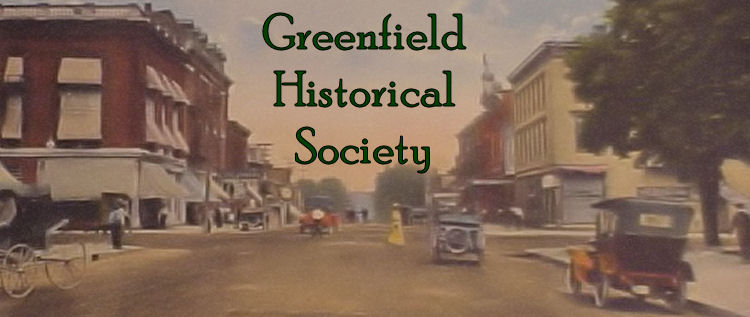
 |
|
|
|
A Great Place to call HomeLocated half way between Columbus and Cincinnati, Greenfield, Ohio, on the west bank of Paint Creek, is a small community in the northeast corner of Highland County. In the fall of 1799 Duncan McArthur, Revolutionary War veteran, platted out the town in the new Philadelphia Plan, a grid of rectangular streets and parallel avenues. Originally part of the Virginia Military District, Highland County was formed in 1805 and outside of towns and villages, property lines resemble a patchwork quilt and not the usual square township plan of the rest of the Northwest Territory. The first person to settle here (1799) was Job Wright. He was a native of North Carolina who had immigrated with his father's family to Ross County. Originally, he settled at the High Bank, just a few miles south of Chillicothe, but not liking that locality, he moved to Greenfield – at a time when Greenfield actually existed only as a name on a piece of paper. He built the first cabin where the Harper House stands. He died Apr. 4, 1842, in Michigan where he is buried at the Prospect Hill Cemetery, Cassopolis, Cass County, Michigan. Greenfield was an important stop in the Ohio River to Canada route on the Underground Railroad. Newspaper accounts report slave catchers attempting to collect runaway slaves. Only in the generation after the Civil War did people begin to speak about what they had seen, or heard or done to aid runaway slaves. The Society created a Paint Creek Freedom Trail brochure for a short driving tour to follow major locations. Greenfield was home to the Patterson Car Company, the first and only car company owned and controlled by African Americans. C. R. Patterson began with a buggy shop, which his heirs developed into the making of cars and buses. The Historical Society has archival photos of the Patterson School Buses lined up in front of the school campus. Edward Lee McClain perfected the detachable horse collar pad and went on to create the American Pad and Textile Factory that evolved into a company with a product line that included lifesaving vests for the military in WWII. Edward Lee McClain believed education was a right for all and gave the city a fully equipped high school with groundbreaking ceremonies filmed in 1913. Copies of this movie are in the Society's archives. Two Vesper Lincoln George murals grace either end of the library and another spans the marble staircase in the center of the school. An original Hiram Powers sculpture, the bust of Ginevra, is on display in the first floor hallway. Copies of famous statuary and paintings and friezes line the hallways and auditorium. Students today still respect the tradition that only graduates of MHS or faculty use the Marble Stairs. The population of Greenfield has remained at about 5,000 for the last century. As the shopping, eating out, radio listening, satellite T.V. watching experience has become more generic, Greenfield is trying, with the aid of the Village, to keep what makes it unique and unusual.

|
|
 |

|